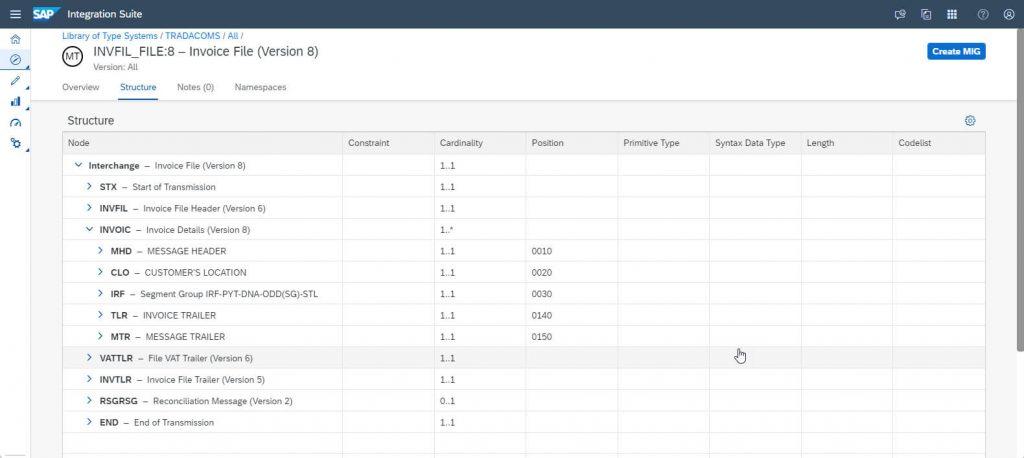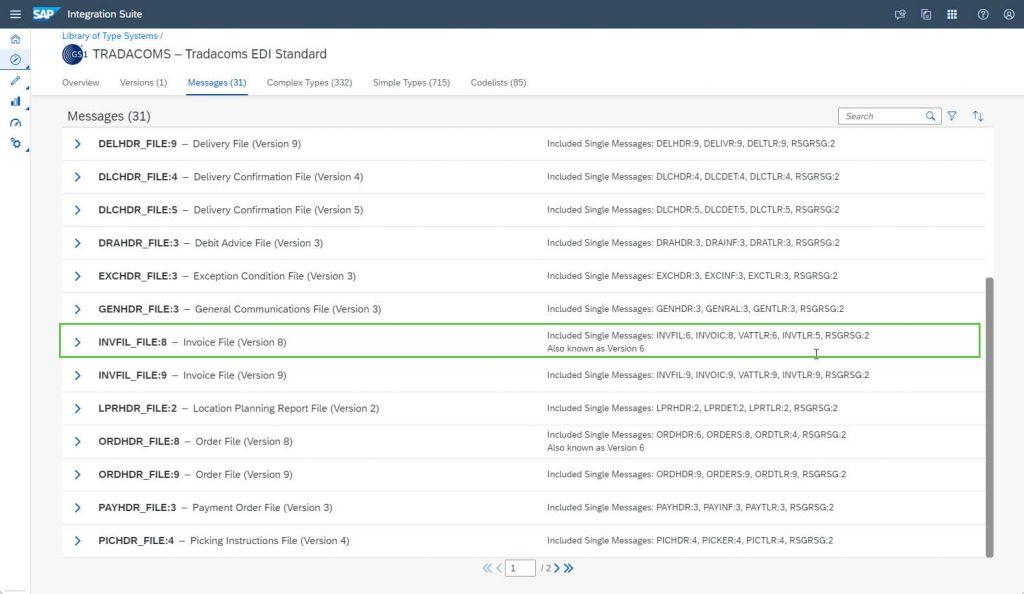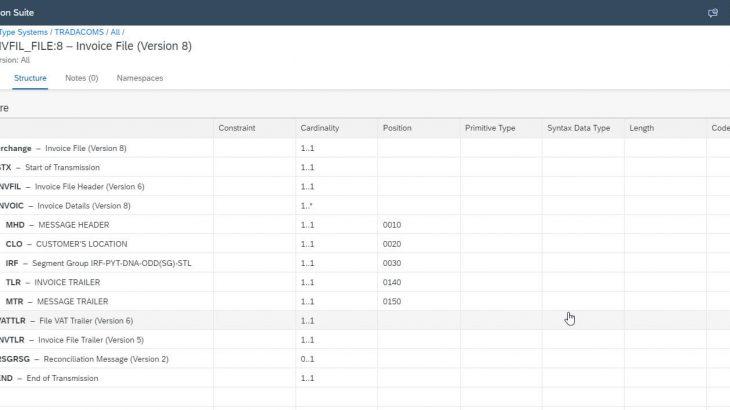I am happy to share with you one more update to the B2B offerings of Integration Advisor and Cloud Integration (of SAP Integration Suite): We now support Tradacoms Message Standard. In this blog post I would like to give you a short overview of this message standard and how to use it.

The picture above depicts the overall building blocks of Integration Advisor. This blog post mainly relates to the Type Systems (B2B Library) area.
Tradacoms Library in Integration Advisor
GS1 TRADACOMS was the core UK message standard from the early days of EDI in the UK retail industry. It was widely used by retailers and wholesalers for EDI order and invoice processes between buyers and their mainly UK-based suppliers.
The Tradacoms standard provided so called Transmission Files which are a predefined combination of single message types.

In the above screenshot, for example, you can see the Invoice Transmission File (INVFIL_FILE) which is a combination of single message types INVFIL, INVOIC, VATTLR, INVTLR and RSGRSG.
Versioning in the Tradacoms Library
Tradacoms versioning strategy is different from Edifact release strategy.
Edifact publishes so called release versions (for example D.01B or D.16A) which contain all artefacts (messages, segments, data elements and codelists) at a given time. Each release forms a complete content package and single artefacts (like messages) might or might not have changed compared to the release before.
The Tradacoms Message Standard (similar to the Odette Message Standard), however, versioned all their messages separately. For example, “INVFIL:6” in above screenshot represents the message INVFIL in version 6.
Due to this versioning strategy and the fact that no updates to the Tradacoms messages are expected, you will find all definitions together in one version called “All”.
In Integration Advisor, the Transmission Files are available under the Messages tab. The single message types (such as INVFIL, INVOIC) are not offered as they can’t be used separately by themselves.

The Tradacoms delivery contains 25 different transmission files. For most of them only the newest version is provided while for six of them two versions are available. For example, ORDHDR_FILE:9 represents Version 9 of the Order file and INVFIL_FILE:8 represents Version 8 of the Invoice file.
The following conventions are used to define Identifier and Version number of the Transmission Files:
- The Header Message of the Transmission File determines the Identifier.
- This convention was derived from the Tradacoms Codelist 16 and the use of these code values in envelope field STX > APRF.
- Moreover, _FILE was added to the Identifier to distinguish between the overall Transmission File and its Header Message.
- The Version of a Transmission File is consistently derived from the version of the Main Message.
For example: The older transmission file for Invoice (Invoice File) consists of five single messages: header message INVFIL (Version 6), main message INVOIC (Version 8), VAT trailer message VATTLR (Version 6), trailer message INVTLR (Version 5) and reconciliation message RSGRSG (Version 2). Applying the rules mentioned above, this Invoice File will be INVFIL_FILE:8 – Invoice File (Version 8).
Please note that the identifiers and versions of the Transmission Files are not defined by Tradacoms standard (by GS1 organization) itself. Different users and data providers have applied different conventions due to which sometimes transmission files are named after the main message and sometimes versions of the transmission files are derived from the version of their respective header message. For example, the older Invoice File (see above) might also be called INVOIC (Version 8) or INVFIL (Version 6).
Tradacoms Usage in Cloud Integration
Cloud Integration has been extended as well to support the processing of Tradacoms Messages.
All relevant EDI Flow Steps (like EDI Splitter or EDI-To-XML-Converter) now offer a third configuration option TRADACOMS besides the earlier options X12 and EDIFACT.
In these EDI Flow Steps (within your Integration Flow) you need to refer to the XSD for your Tradacoms message. These XSDs will be created by Integration Advisor as part of the Runtime Export. The file names of these XSDs follow a standard naming convention: For example, above Invoice transmission file is exported as TRADACOMS_INVFIL_FILE_8.xsd.
Please note that the EDI Splitter works slightly different considering the semantics of the Tradacoms transmission files: If a transmission contains 5 main messages (like INVOIC), then the EDI Splitter will produce 5 separate Cloud Integration messages (one for each of these 5 main messages). Each of these 5 Cloud Integration messages will not only contain the respective main message, but also the header and trailer messages (INVFIL, INVTLR etc.) which are duplicated into all 5 split messages. This way, further processing like mapping is simplified.










